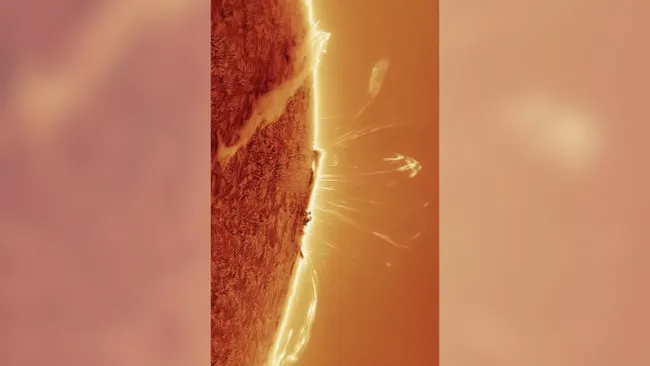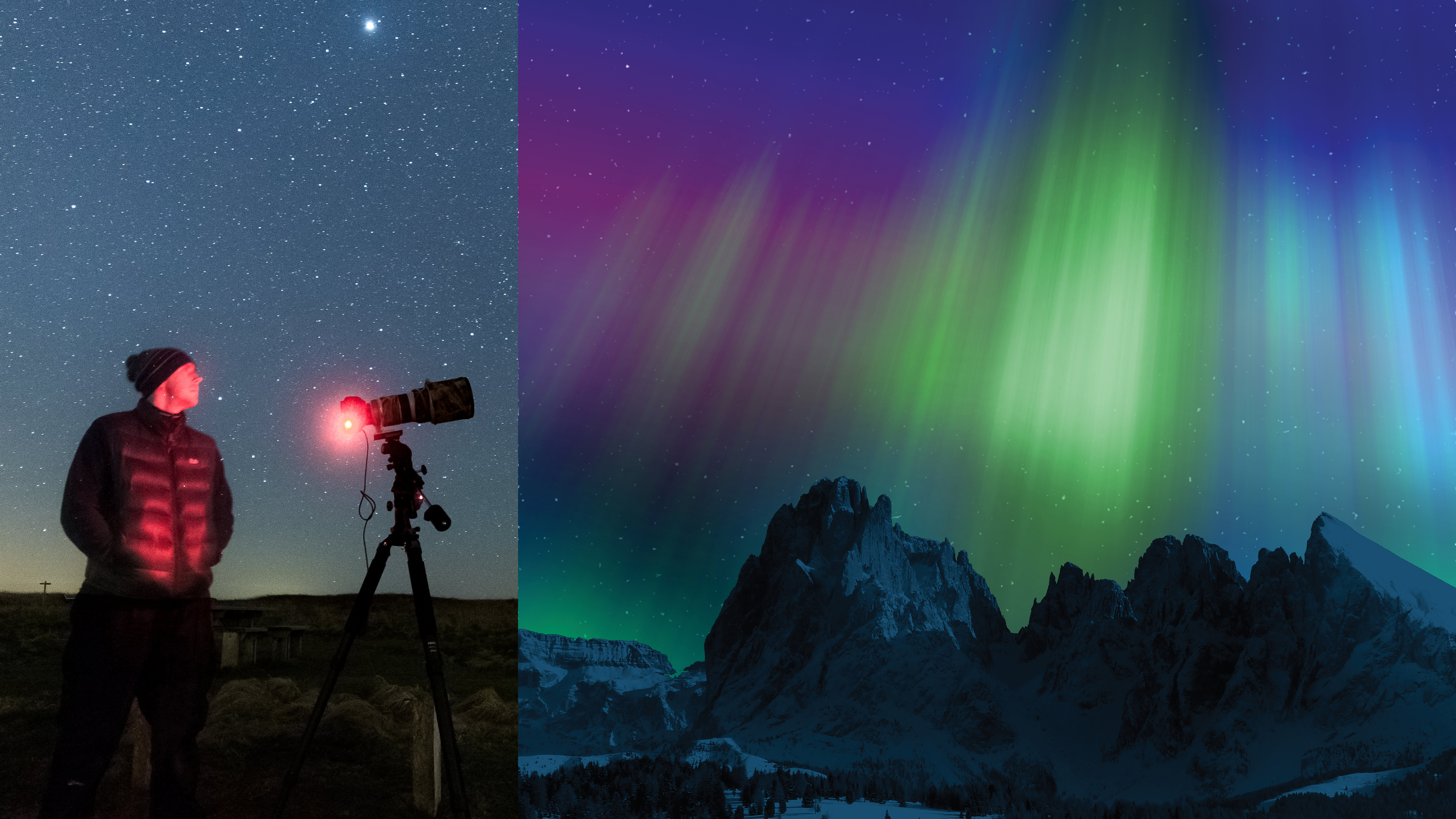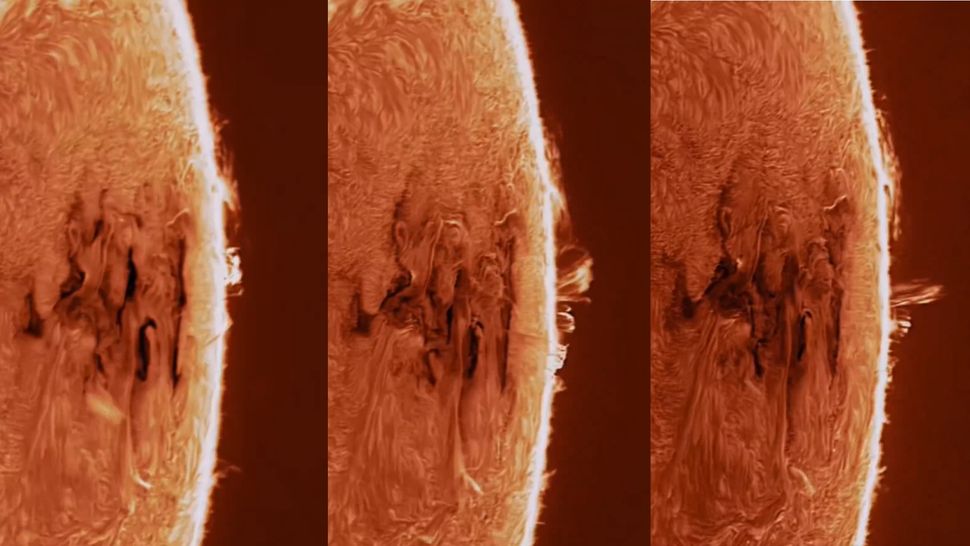
Sunspots are huge, dark, temporary areas on the surface of the Sun that are cooler in temperature than the rest of the surface, and form due to massive changes in magnetic field.
The strength of the magnetic force stops some of the sun’s heat from being able to reach the surface, and causes large-scale magnetic disruptions in the form of solar flares and coronal mass ejections, sending electrical charges towards the earth, and causing solar storms.
When these electrical charges collide with gases in the Earth’s atmosphere, the Northern Lights appear.
The two most common gases in the Earth’s atmosphere are oxygen and nitrogen. Oxygen atoms glow green, which is the most common color seen in the Northern Lights, while nitrogen atoms burn purple, blue and pink.
The solar storm triggered in May was a Category 5, the strongest possible, and sparked auroras far brighter than their normal ranges.

The returning sSunspot
Astrophotographer Andrew McCarthy has been keeping an eye on the guilty sunspot region responsible for the stunning views back in May, and has captured some incredible close-up images from his backyard.
"Unlike most celestial objects, the Sun looks quite different from day to day, and is filled with exciting events like flares or coronal mass ejections. There's always something interesting to look at!" McCarthy told Space.com.
At one point, McCarthy managed to record plasma loops appearing to “dance” across the surface of the Sun.

Understandably, taking these stunning astro images is not an easy task.
“This is what it looks like when I manually align each tile of a solar mosaic. I do it manually because I get an intimate look at each panel– so I know if I need to go back and restack it. This is the part of astrophotography that is pretty tedious and turns a lot of people off,” he wrote on Twitter.
McCarthy removes atmospheric artifacts and adds color in the post-processing, to increase the contrast and overall aesthetic of the image.
"Naturally the view through my telescope is red, but because of the nature of the highly filtered light I have to use a monochrome camera to capture it, thus color is added later," he told Space.com.
This is what it looks like when I manually align each tile of a solar mosaic. I do it manually because I get an intimate look at each panel- so I know if I need to go back and restack it. This is the part of astrophotography that is pretty tedious and turns a lot of people off. pic.twitter.com/yyoXpRM7cVMay 29, 2024
Even the best cameras for astrophotography wouldn’t be able to provide this level of detail, and McCarthy has perfected his impressive backyard set-up over the years.
"My equipment is always ready to go, as I have built an observatory to house my solar telescope and have it ready at the push of a button," McCarthy told Space.com.
"Capturing the timelapse footage is simple, but it took a long time to learn how to do it effectively. That's where my years of experience have helped me!" McCarthy continued.
My 3rd consecutive day watching this now-famous sunspot as it swings back to be Earth facing. This is a timelapse video I recorded over a period of roughly 90 minutes- you can watch how the sped-up plasma dances like flames…. Except the “flames” are larger than Earth. pic.twitter.com/1J2XL9zY6qMay 29, 2024
Will the Northern Lights be visible again?
The Earth has now rotated around the Sun, and the sunspot is now facing our way again, meaning that – over the next few days – the Northern Lights may well be visible again.
The National Oceanic and Atmospheric Administration provides a 30-90 minute forecast of the location and intensity of the aurora (handily showing where it compares to day and night too).
If you're in to going out light hunting, we've rounded up the best cameras for shooting in low light here. We've also put together our favorite picks of the best cameras for astrophotography, as well as the best astrophotography lenses.







